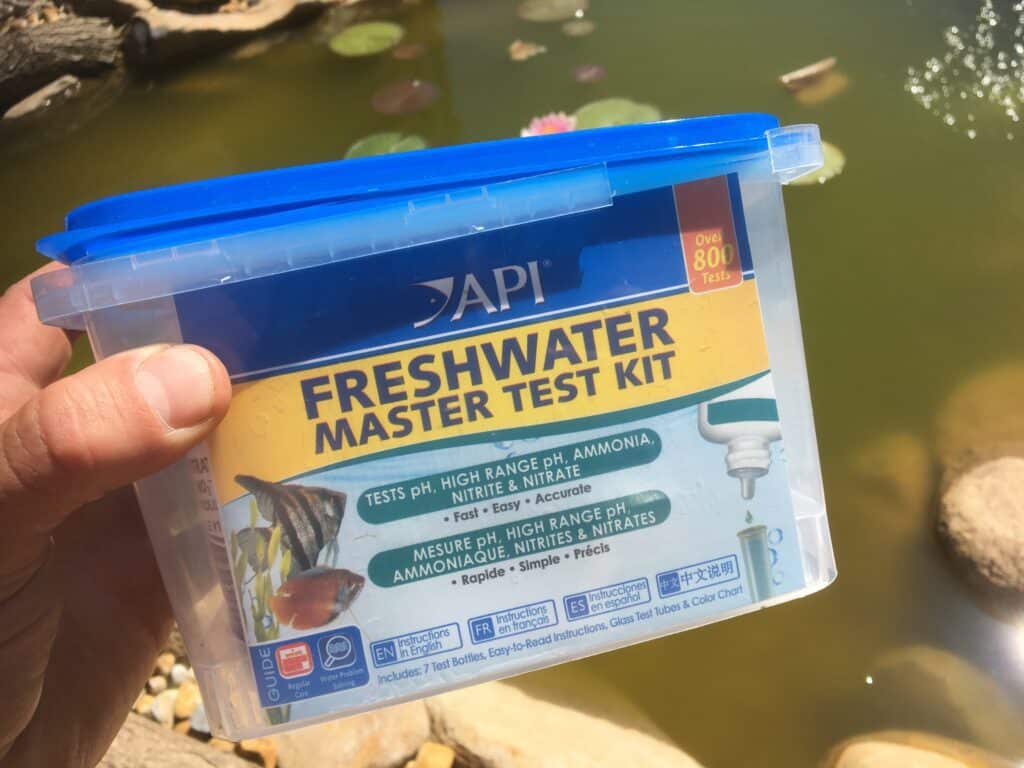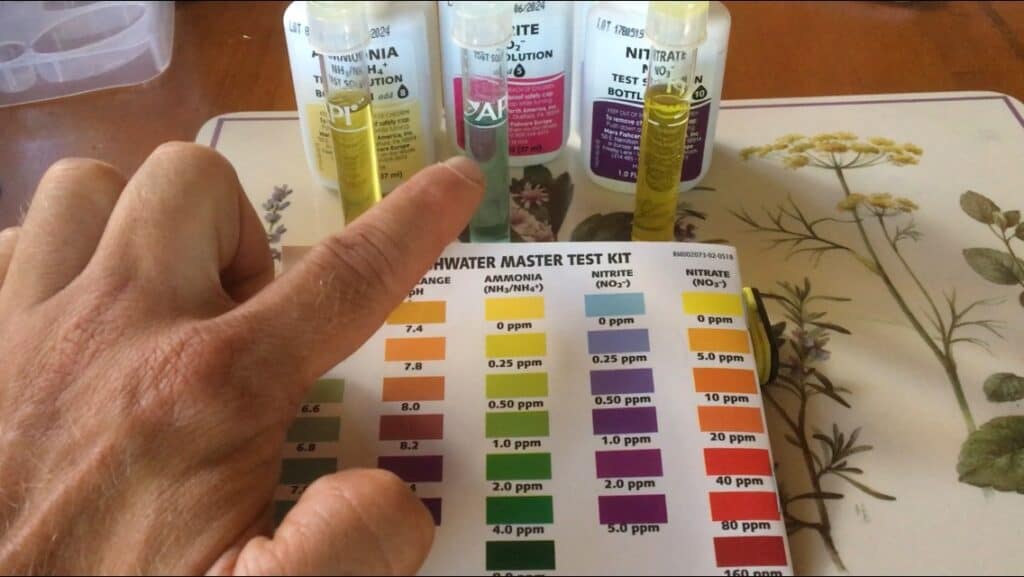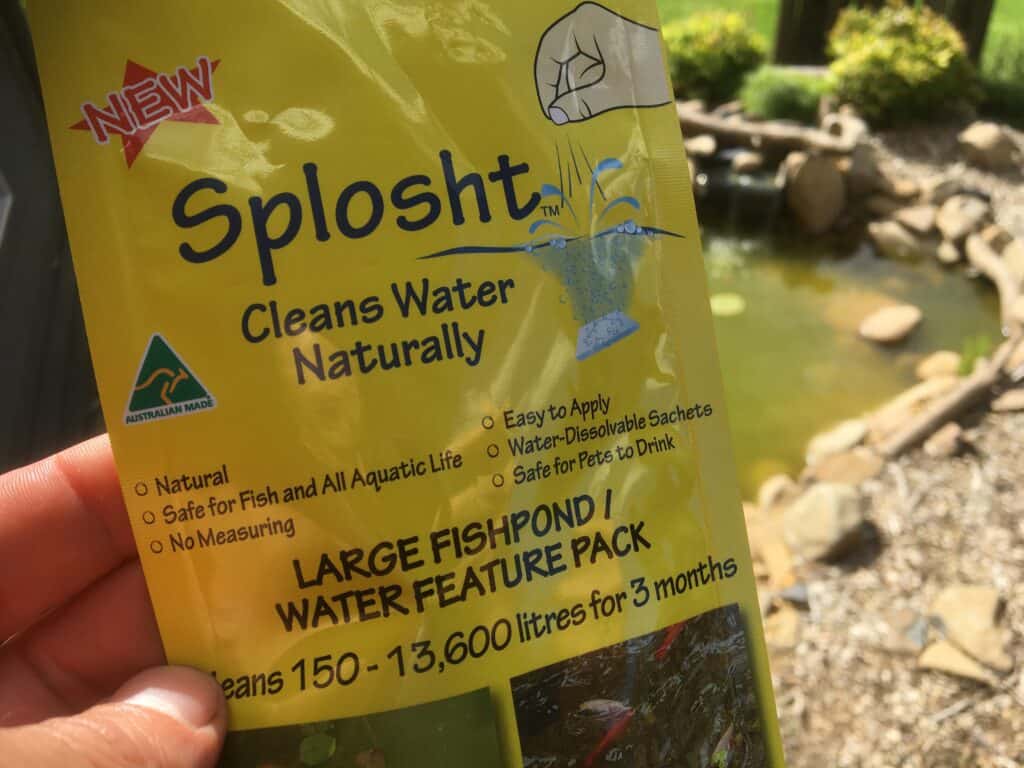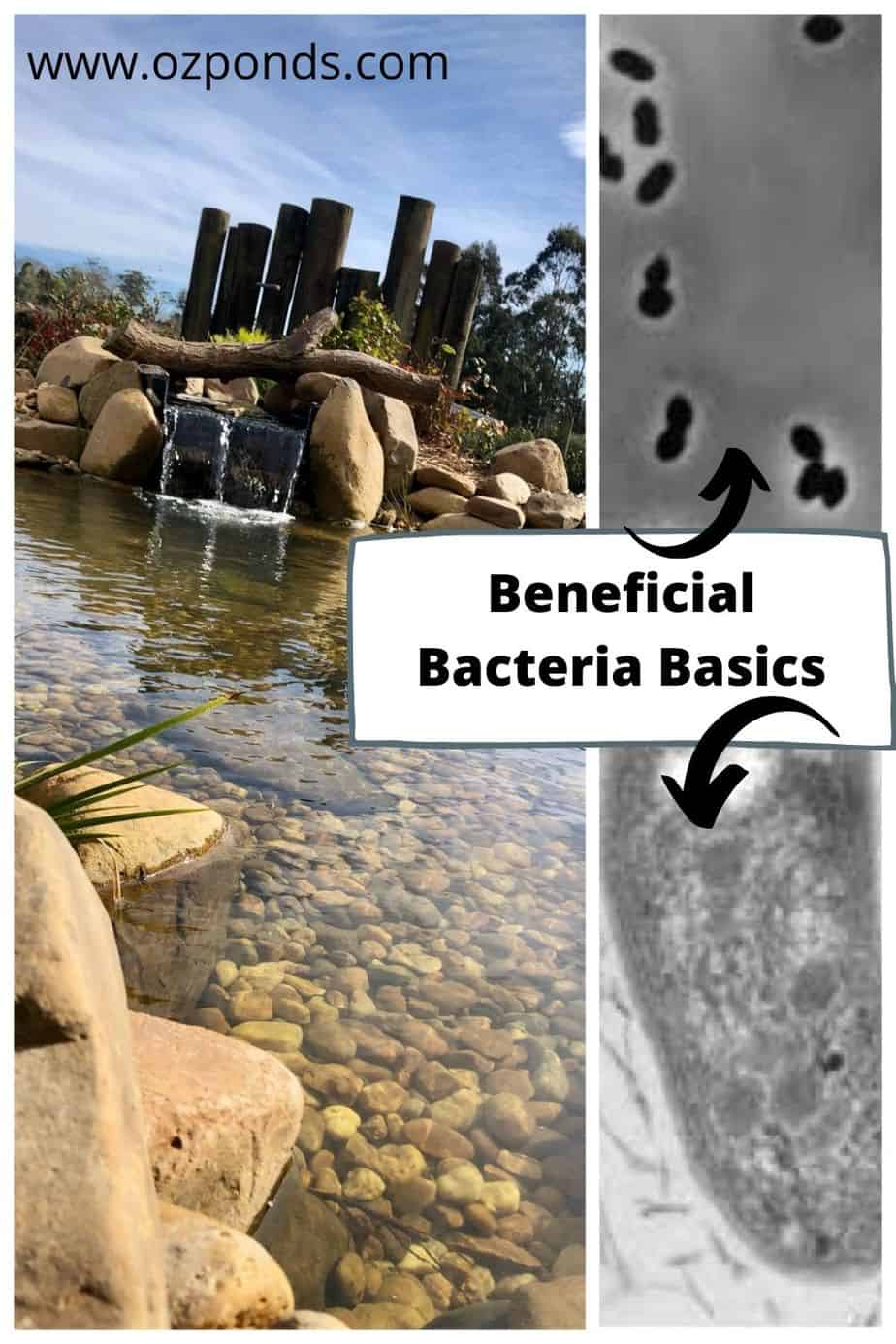A pond is a living body of water and needs micro-organisms and bacteria to thrive.
Without bacteria certain pollutants will build up in the water. This can lead to problems with water quality, excessive algae, sludge build up and even fish deaths.
The most important bacteria for pond owners to be aware of is nitrifying bacteria. This is often sold as “beneficial bacteria”.
There are two types of nitrifying bacteria.
The first is nitrosomonas. These convert ammonia into nitrite.
The second is nitrobacter. These convert nitrite to nitrate.
Because all these compounds are a form of nitrogen the process is called “the nitrogen cycle”.
Ammonia and nitrite are both toxic to many aquatic species (including fish), even in small quantities.
Hence the importance of the nitrifying “beneficial” bacteria.
There are also other strains of bacteria that will consume organic materials like fish waste and dead leaves. Even with a good pond skimmer “stuff” always finds its way to the bottom of the pond.
These bacteria as well as tiny micro-organisms eat and break down this waste.
Not only do these bacteria and micro-organisms help prevent a thick layer of sludge building up, they also provide a source of food for small insects and fish.
How to grow beneficial bacteria for a pond
The best thing about these vital ingredients for pond health is that they are naturally occurring.
If you do absolutely nothing overtime nitrosomonas and nitrobacters will colonise your pond!
These bacteria are found everywhere. In the air, in soil, rocks and of course water.
To ensure your pond has a healthy population of beneficial bacteria, there are a number of things we can do:
- Wet surfaces. Nitrifying bacteria thrive on wet surfaces. Pond liner, Plant roots, rocks, gravel, all provide a home for the bacteria. The more surface area you provide the more bacteria can potentially grow. One of the best things you can do to increase the amount of surface area is adding a bog filter.
- Oxygen. There are two zones where bacteria will grow in a pond aerobic (oxygen rich) zones and anaerobic (oxygen poor) zones. The bacteria living in the aerobic zones will consume pollutants and reproduce much faster than bacteria living in anaerobic zones.
- No chlorine. City water has chlorine or chloramine added to prevent us getting sick from pathogens etc in the water we drink. It also kills bacteria. Never add chlorine or chloramine to the pond. If you need to do a major water top up using town water add a de-chlorination treatment (amazon link) to the pond first.
Do these 3 things and you’ll have plenty of free beneficial bacteria colonise your pond.
How long does beneficial bacteria take to grow?
It can take anywhere from 4 weeks up to 12 weeks for the bacteria to become established in a pond.
You can speed up the process by sound any of the following:
- Adding bacteria in a bottle or satchel. There are many brands to choose from but they all do pretty much the same thing. They have millions of nitrifying bacteria ready to go.
- Add a couple of fish. The fish secrete ammonia thus feeding the nitrosomonas and kickstarting the process.
- Throw in some rocks and gravel from an already established pond. These will already have nitrifying bacteria living on them.
- Take a few buckets of water from an existing pond. Again the existing pond will already have the bacteria’s living in it.
You can watch the actual cycle take place using a water test kit (amazon link).

At first you’ll see the ammonia level spike. As the nitrosomonas grow and convert the ammonia into nitrite, you’ll see the nitrite spike. Now the nitobacters grow and convert the nitrite to nitrate. Once this happens you have a sustainable population of beneficial bacteria.

Should you add beneficial bacteria to your pond?
Because all the beneficial strains of bacteria occur naturally it is not necessary to manually add them to your pond. However at certain times it does make sense.
For example I add it to a new pond. This speeds up the “cycling” of the pond. That means I can add fish sooner and am less likely to experience sever problems with algae/ green water.
If I didn’t add the bacteria I would need to wait up to 3 months for it to naturally be colonised by the bacteria.
The only other time I add bacteria is the start of spring once the water gets over 10C (50f). In cold water the bacteria basically shuts down for the winter.
It’s not uncommon for pond owners to see their water go green at the beginning of the season. This is because the bacteria levels are too low for the pond.
As the fish become more active they secrete more ammonia. As we know that ammonia needs to be processed. If there isn’t enough bacteria the single celled algae will grow to consume it. This is perfectly safe for the fish it’s just unsightly.
So by seeding the pond with bacteria in spring you can usually avoid any problems.
How often should you add bacteria to your pond?
As I mentioned I only add bacteria to my ponds in spring.
Over winter the water is too cold for the bacteria to reproduce. Anything under 10C (50f) is too cold, that is the pond temperature not the air temperature.
In summer and early autumn the water stays consistently warm. The bacteria will be growing and reproducing just fine without the need to continuously add more.
You can continue adding it and it won’t do any harm to the pond. I personally find it unnecessary and therefore a waste of money adding it at this time of year.
In terms of whether you should add it daily, weekly, bi-weekly or monthly depends entirely on the manufacturer.
I take that into consideration when purchasing.
There are many manufacturers and they are all in it to make money.
I’ve found they all do pretty much the same thing so I base my decision on the best bang for my buck.
What is the best bacteria to buy for your pond?
At the moment I use Splosht (eBay link). It is around $20 for 3 months worth. It comes in hand little sachets that you just drop directly into the pond. This is an Australian company, I’m not sure if it is available globally.

I have also used aquascape maintain (amazon link). This also works well. Like I said for me it came down to cost and Splosht works out cheaper here in Australia.
Aquascape maintain needs to be applied weekly, maintain does have a built in flocculent which is used to bind small suspended particles together. This is quite useful as it helps keep the water free of small particulates that can cloud the water.
Can you add too much bacteria to a pond?
You can’t really overdose the pond to the point where it causes harm to fish and plants.
If you do add way too much the water can become murky or cloudy. This will usually clear naturally within a couple of days. If it persists you can do some small water changes.
The main reason you don’t want to overdo the dosage is the cost. But if you accidentally spill in too much don’t panic.
Products that are helpful for maintaining pond water quality
I like to keep my pond as maintenance free as possible. There are so many products targeting pond owners. But if you have a good filtration system and sensible fish numbers (click to read my article on how many fish for a pond) you’ll only ever need two, maybe three.
Firstly when it comes to the main filter you cannot beat a bog filter in my opinion. This is going to make your pond so maintenance free it’s not funny. If you would like to learn more about adding a bog filter to your pond read my article 7 reasons you should add a bog filter to your pond.
From there you should find plenty of links and videos showing how easy they are to make and even retrofit to an existing pond.
The other type of filter you should have is a skimmer. This will help remove some of the leaves and other debris that fall into the pond. Again I like to make my own as it saves on cost.
When it comes to additives apart from beneficial bacteria I always keep a flocculent (amazon link) on hand. These are used to bind small suspended particles together.
Quite often as leaves, fish poo and other stuff break down in the pond the get so small that they just float around in the water column. They are so small that the can pass right though all the filters and the pump.
A flocculent binds them together so they are big enough to get trapped in the filter. This keeps the water looking crystal clear.
Below is a video showing an extreme example of how a flocculent works on a pond. In this particular case the fine clay particles were too small to get caught in the filter. One they bonded together the results are quite remarkable.
You don’t need to use a flocculent regularly just whenever you notice the water is a little cloudy. Oh and it’s perfectly safe for the fish and plants.
The only other product I keep in hand is an algaecide. This is for string algae. I’ve found I never have a problem with string algae in the ponds themselves, but quit often it will grow on my streams and waterfalls.
In the pond the fish will eat it.
I only use the algaecide (amazon link) as a last resort. Again this is usually in early spring when the pond plants aren’t quite growing fast enough to consume the nutrients.
If it’s only a small amount of algae you are better of just manually removing it by twirling it around your finger or a stick. It can be thrown in the compost or if it’s only a small amount feed it to the fish.
Subscribe
Hopefully this article has been helpful.
I often receive special offers and discounts from pond suppliers and distributors. These special offers I share with my readers.
If you would like to receive these special offers and discounts make sure you subscribe to the mailing list, so I can deliver them direct to your inbox.

